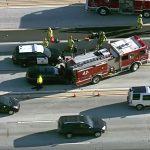Based on recordings of communications with the control tower, Japanese authorities said on Wednesday that although a passenger jet that crashed with a Coast Guard turboprop at a Tokyo airport was allowed to land, the smaller plane was not approved for takeoff.
All 379 people aboard the Japan Airlines (JAL) (9201.T) Airbus A350 had a miraculous escape after it erupted in flames following Tuesday’s crash with a De Havilland Dash-8 Coast Guard turboprop shortly after landing at Haneda airport.
However, of the six Coast Guard members scheduled to take out on an aircraft in response to a significant earthquake on the west coast, five perished, and the captain, who managed to escape the debris, suffered serious injuries..
Authorities have only just begun their investigations and there remains uncertainty over the circumstances surrounding the incident, including how the two aircraft ended up on the same runway.
But transcripts of traffic control instructions released by authorities appeared to show the Japan Airlines plane had been given permission to land but that the Coast Guard aircraft had been told to taxi to a holding point near the runway.
An official from Japan’s civil aviation bureau told reporters there was no indication in those transcripts that the Coast Guard aircraft had been granted permission to take off.
The captain of the Coast Guard plane said he had entered the runway after receiving permission, a coast guard official said, while acknowledging that there was no indication in the transcripts that he had been cleared to do so.
The Japan Safety Transport Board (JTSB) is investigating the incident, with participation by agencies in France, where the Airbus airplane was built, and Britain, where its two Rolls-Royce engines were made, people familiar with the matter said.














